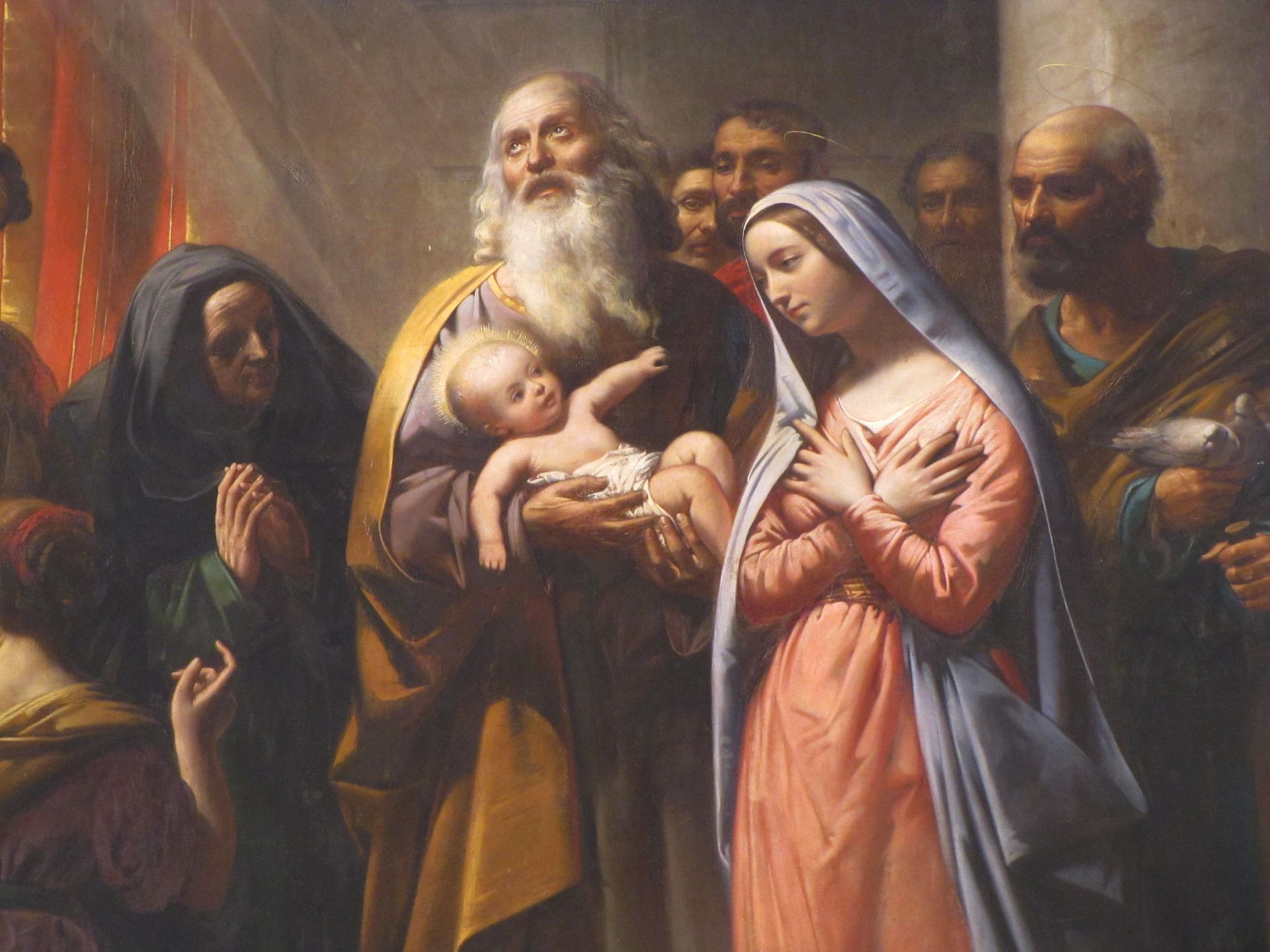
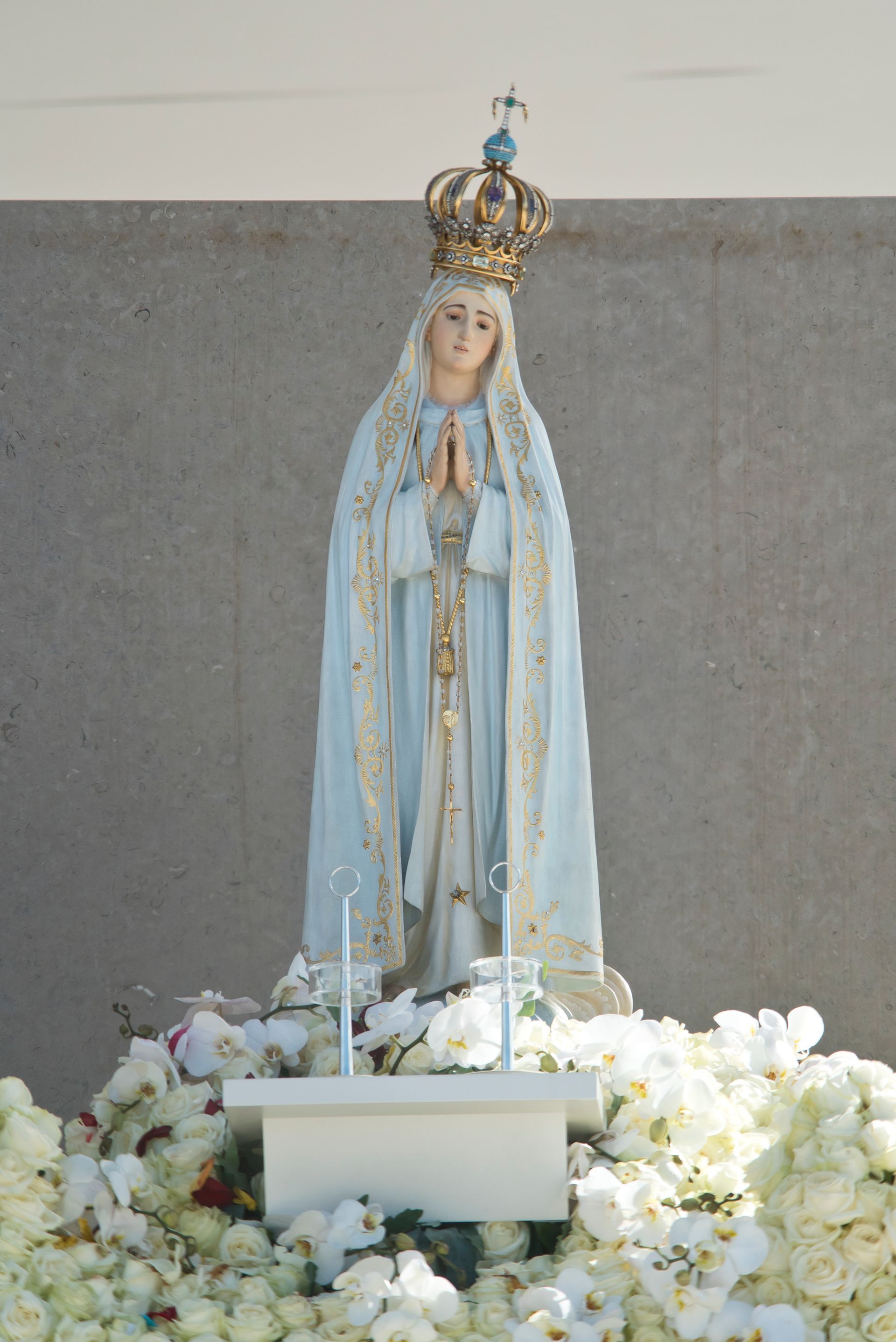
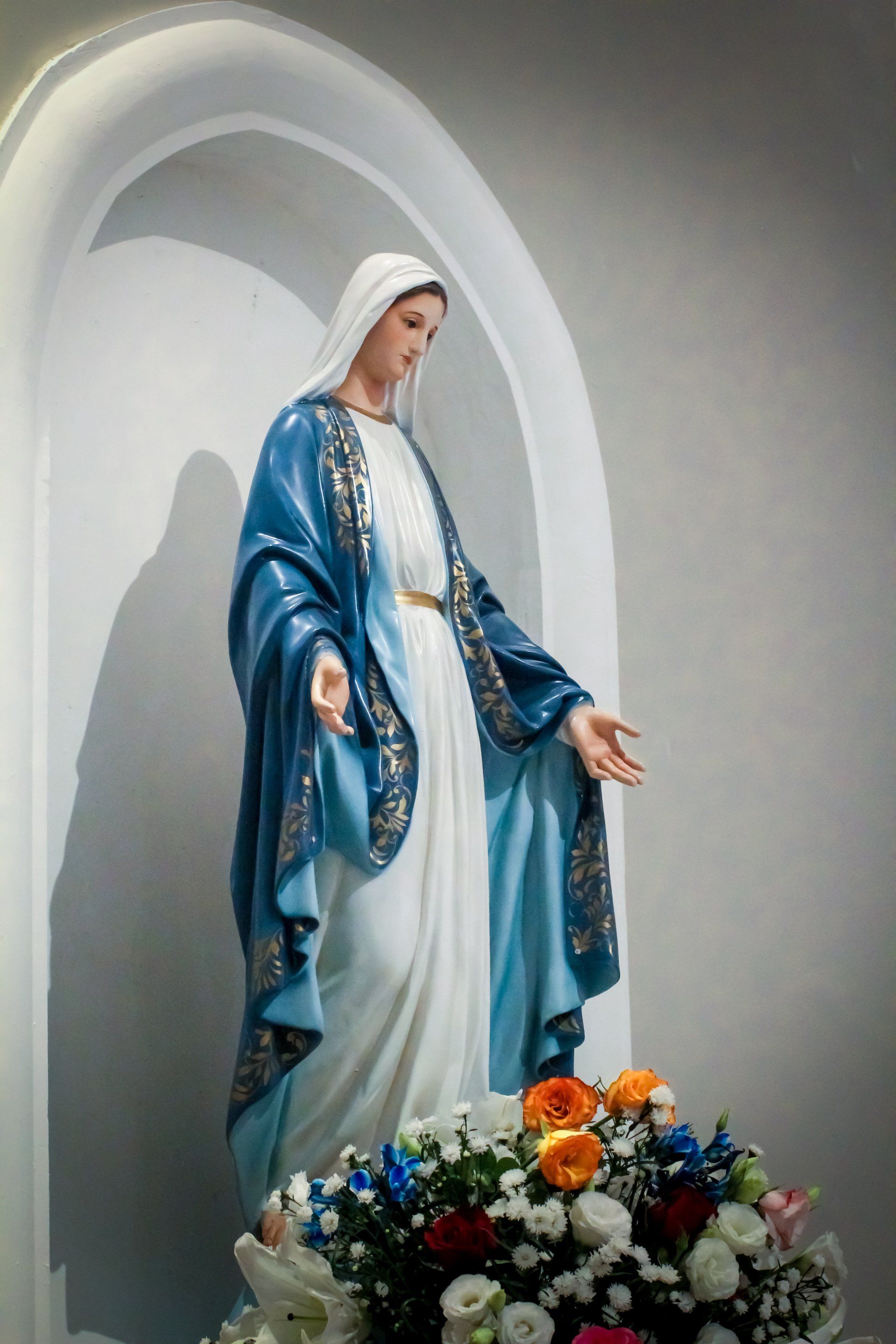
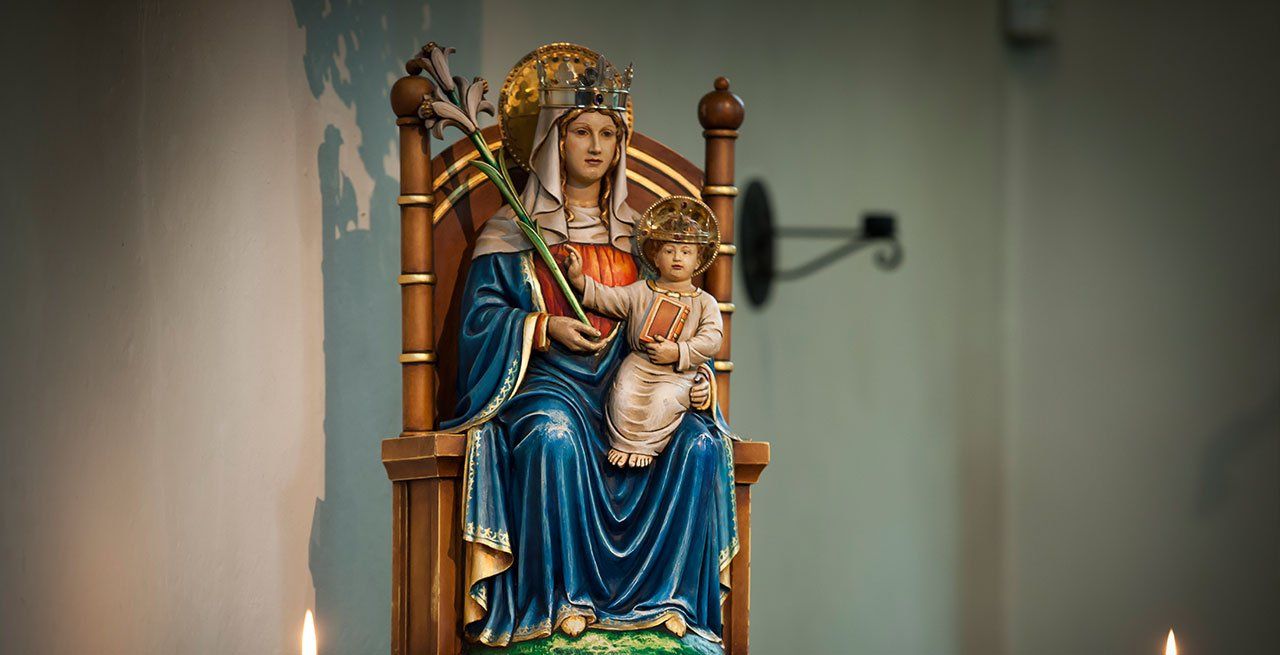
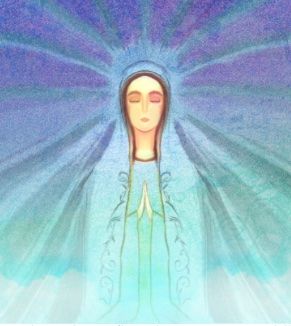
It is Saturday 9 December 1531 in a small village near Mexico City. Juan Diego, a 57 year old peasant farmer (known as Cuauhtlatohuac before his conversion to Catholicism), is making his way through the dim early morning light to attend Mass. As he walks past Tepeyac Hill, the site of a former Aztec temple, he suddenly hears the most exquisite yet somehow unearthly music, which he takes to be the sound of the first birds of the day. Drawn to the sound, he takes a few steps aside from his path and comes face to face with a radiant vision – a beautiful Indian maiden dressed like an Aztec princess, surrounded by a cloud of light.
Juan is dazzled yet, understandably, startled. The princess calms him, telling him that she is in fact the Virgin Mary. She asks Juan to visit his Bishop and tell him what he has seen, adding that she wishes a temple to be built on the site of her appearance where she can hear the petitions of the Mexican people and ease their suffering.
Juan is bemused as to why Our Lady should have chosen him for this task – a poor and insignificant man, widowed and living with his elderly uncle –but he obediently visits Bishop Juan de Zumarraga with Mary’s message. The Bishop is patient but dismissive and Juan can tell that he is sceptical of his motives in coming forward with such a tale. Perhaps he thinks that Juan is seeking attention or money, or has been deceived by a diabolical hallucination...
Downcast, Juan begins to doubt himself. He creeps back to Tepeyac Hill, where the vision appears as before, and tells Our Lady his sorry tale. Mary reassures him and instructs him to visit the Bishop again the next morning.
The second visit goes no better, with the Bishop becoming agitated by Juan’s persistence. He tells Juan to ask Our Lady for a sign that this vision is truly of divine origin and can be trusted. Juan promises to do so and to visit the Bishop again the very next day. However, when he returns home that evening he finds that his uncle has become suddenly and violently ill with a burning fever well known to the local people. It is almost always fatal, especially for a 68 year old man. Juan cannot bring himself to leave his uncle’s bedside and stays with him for two days, missing his appointment with Our Lady.
When it becomes apparent that his uncle is on the brink of death, Juan, agitated and upset, hurries to find a priest for the Last Sacraments. As he runs, weeping and short of breath, who should stand in his way but Our Lady. Upon Juan’s explaining himself, she replies with the most beautiful and comforting of words:
“Hear me and understand well, my little son, that nothing should frighten or grieve you. Let not your heart be disturbed. Do not fear that sickness, nor any other sickness or anguish. Am I not here, who is your Mother? Are you not under my protection? Am I not your health? Are you not happily within my fold? What else do you wish? Do not grieve nor be disturbed by anything.”
Juan feels ashamed of his lack of trust but, emboldened by Mary’s reassuring words and presence, belatedly asks for the sign requested by the Bishop. Mary tells him to climb to the top of Tepeyac Hill and gather the flowers he will find blooming there.
One might imagine that Juan would once more feel sceptical at this point – it is the middle of December and cold and besides, nothing but cacti grows on the top of the rocky hill. However, he hurries to obey and finds a mass of roses in full bloom, which he gathers up into his tilma (cloak). In the meantime Mary visits his uncle and restores him to health, telling him too about her temple and, furthermore, that she wishes to be known as ‘Santa Maria de Guadalupe’.
Juan finally returns to Bishop de Zumarraga, opens his cloak and lets fall the flurry of vivid roses. The once-sceptical Bishop sinks to his knees in reverence.
It is not just the roses that have astounded him. A beautiful and miraculous image has imprinted itself upon Juan’s humble tilma. It is a picture of Our Lady just as Juan had seen her, a native Indian princess. Her hands are folded and her head bowed as she prays to God. She wears a blue cloak upon which the stars are arranged exactly as they were in the sky at the time of her first appearance. Our Lady’s radiance blots out the sun and she crushes under her feet a great crescent moon – both symbols of gods found in the ancient Aztec religion.
The imagery is clear to the Mexicans present, and also to those of their people who will flock to view the tilma over the following years: this lady is more powerful than any god of the old religion but she is not herself a god, rather she is paying homage to the True God. When asked who she is, Juan replies ‘Te Coatlaxopeuh’ meaning ‘she who crushes the stone serpent’, a reference both to the protoevangelium in Genesis 3:15 and to a specific Aztec deity, the feather serpent ‘Quetzalcoatl’.
The princess in the image being pregnant, another Biblical image is brought to mind: the ‘great portent’ of Revelation 12, the ‘woman clothed with the sun, with the moon under her feet and on her head a crown of twelve stars. She was pregnant and was crying out in birth pangs, in the agony of giving birth’ (.2)

By Anneli Figura - (Article first published May 2019 - for www.thefaithcompanion.co.uk)
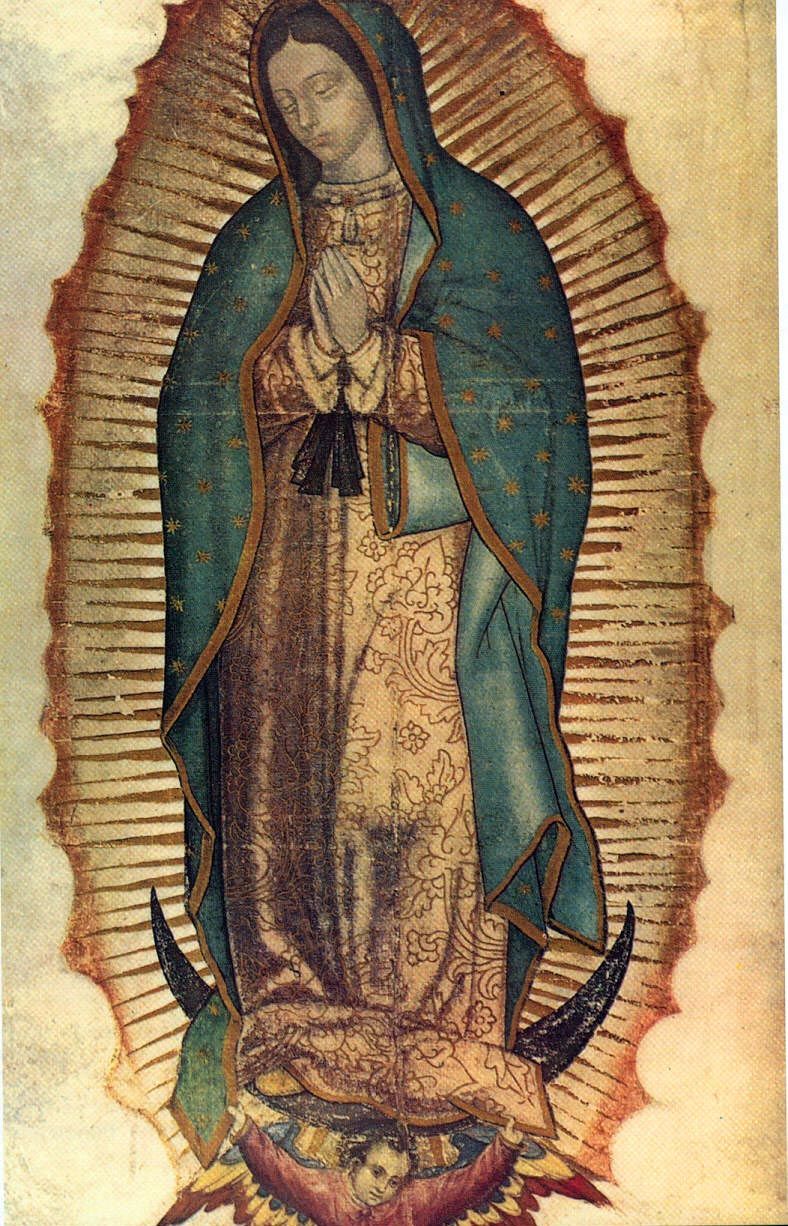
That is the wonderful true story of Our Lady of Guadalupe3. It happened in a specific place and at a specific time and yet it continues to unfurl its messages to us today. Pages have been written in exploration of its depths, but we will concentrate here on what we can call ‘a
Ttheology of hope’. This has application to the pro-life movement, for which the image of Our Lady of Guadalupe is a well-known symbol, but also has a much wider relevance.
The ‘culture of death’ that prevailed when the image appeared on the tilma was not that of abortion but of the Aztec culture of human sacrifice. Fr Frank Pavone explores the link between these two cultures very well.4 He explains that the Aztecs were essentially the victims of a ‘theology of despair’ in which human beings were a small and vulnerable part of a universe dominated by unstable gods. These gods had already destroyed the world four times and were soon to do it again. As the Aztecs saw it, they had no choice but to practise human sacrifice in an effort to appease these capricious and terrible deities.
“... Our Lady brought a religion of hope...”
Countering this, Fr Frank says, Our Lady brought a religion of hope. She carries within her womb God Himself, who – far from being ‘a God far away who waits to be appeased by blood’ – loves humankind so much and thinks them so important that He decides to become one of them and participate in their life. The love between Himself and each human person is as close as the bond between a mother and her unborn child. To the Aztecs, the welcome message would have been that there is no more need for fear and human sacrifice now that God is on their side!
In the ten years following Our Lady of Guadalupe’s appearance human sacrifice was abolished and ten million Mexicans were converted to Christianity.5 Today pro-lifers pray that Our Lady of Guadalupe will bring the same message of hope to vulnerable expectant parents who feel that they have no choice but abortion.
Looking further afield, Our Lady’s invitation to hope and trust is open to all of us, whatever the particular difficulties with which we struggle. Read again Our Lady’s beautiful words of comfort to Juan Diego and apply them to yourself. If you are tired and worried, go to her as your Mother just as a child would, tell her everything ... and leave it all at her feet. She will carry it all to the God who loves you so much that He became your brother.
1 ‘I will put enmity between you and the woman, and between your offspring and hers; he will strike your head, and you will strike his heel.’ Generally interpreted as a prophecy of Mary, Jesus and their victory over satan.
2 Revelation 12:1,2. Again usually interpreted as referring to Mary.
3 Sources:
https://www.franciscanmedia.org/our-lady-of-guadalupe/
https://www.catholic.org/saints/saint. php?saint_id=456
https://www.catholicculture.org/ culture/liturgicalyear/calendar/day. cfm?date=2018-12-12
https://www.catholic.org/saints/saint. php?saint_id=73
Accessed 29.3.2019
4 http://www.priestsforlife.org/articles/2791- our-lady-of-guadalupe-and-the-pro-life-movement Accessed 1.4.2019
5 http://olg.cc/about/about-our-patroness/our-ladys-image-on-the-tilma/ Accessed 1.4.2019
Page
7





Everyday Christian Marketing LTD
Registered Office: The Gate Business Centre, Keppoch Street, Roath, Cardiff, CF24 3JW, South Wales, UK